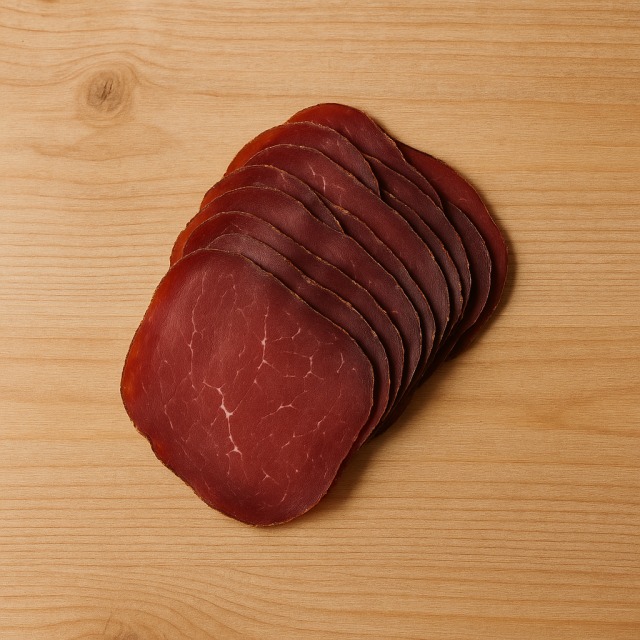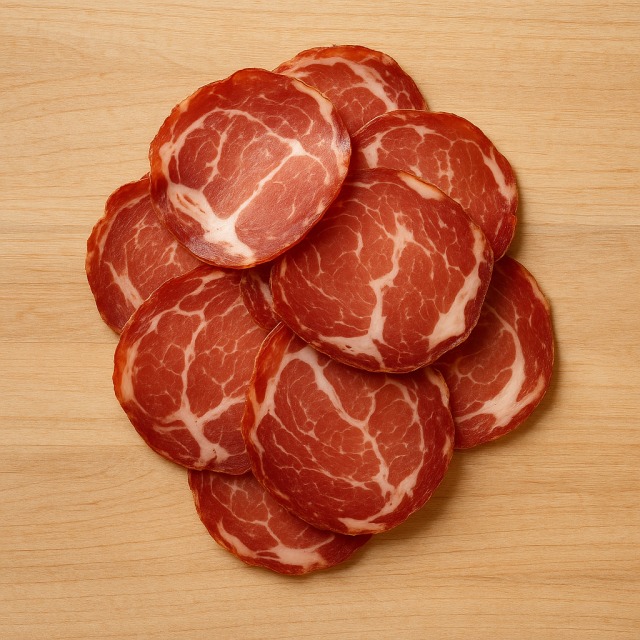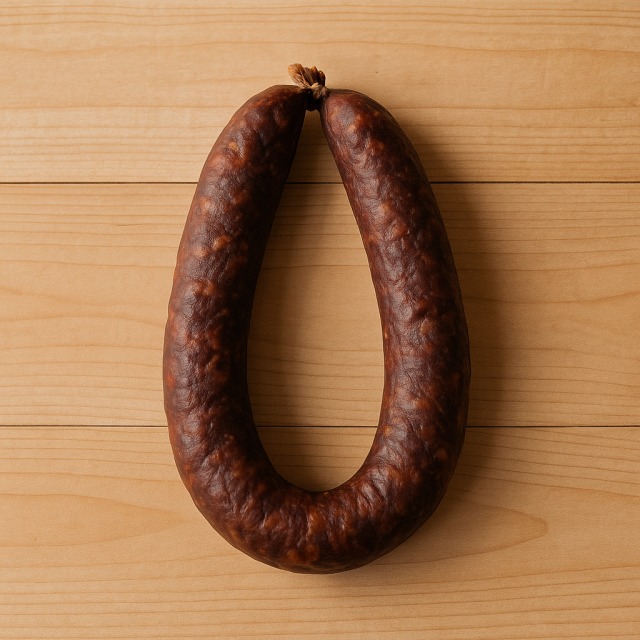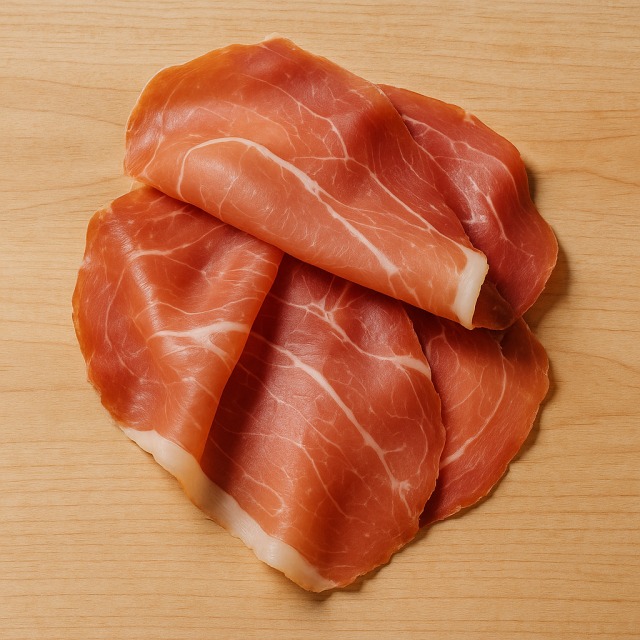Calorie Chart / Meat & Eggs / Salami
How Many Calories Are in Salami?
Calculation of the nutritional value & Recommended Dietary Intake of salami
For g and a calorie requirement of kcal
| Calories 138 kcal | Proteins 5.6 g | Lipids 13 g | Carbohydrates 0.5 g |
| 7% | 7% | 19% | 0% |
Health benefits of salami

Salami - 100g
Calories 459 kcal
Proteins 18.5 g
Lipids 42 g
Carbohydrates 1.7 g
With 459 kcal per 100 g, salami is clearly a high-calorie delicacy. Its dense calories supply quick energy for hikers or athletes in need of a compact snack. Beyond calories, salami provides 18.5 g of protein that contributes to muscle maintenance and repair.
The curing process concentrates several micronutrients: sodium and potassium for electrolyte balance, vitamin B1 (thiamine), useful for carbohydrate metabolism, and vitamin B12 that supports red-blood-cell formation. Iron and zinc, two minerals often lacking in vegetarian diets, are also present. However, because nitrates and nitrites are used for preservation, regular consumers should vary their protein sources to limit exposure—moderation is essential when dealing with calories from processed meat.
Historically, salami was created in Italy to store meat without refrigeration. The name comes from the Latin "salumen," meaning salted meat. Aging not only intensifies flavor but also reduces water content, explaining why the same weight of fresh meat contains fewer calories than salami. Culturally, different regions add garlic, fennel, or wine, each variation influencing taste yet leaving calories relatively unchanged.
Tips for incorporating salami into a balanced diet
Because its calories are mainly fat-based (42 g lipids per 100 g), pair salami with fiber-rich, low-calorie foods to balance the meal. A Mediterranean platter of raw tomato, cucumber, and a handful of arugula drizzled with lemon juice offsets the calories of a few thin salami slices while adding vitamins.
For a lighter sandwich, use two slices of wholemeal bread, spread a thin layer of mustard, add salami, crisp lettuce, and grilled bell pepper. You get flavor without letting calories spiral out of control.
Pizzaioli who love salami on their pies can cut the calories by combining it with part-skim mozzarella and extra vegetables such as mushroom or zucchini slices. Limit salami to 20–25 g per portion; the vegetables bulk up the plate with minimal calories.
Finally, contrast the rich calories of a charcuterie board by ending the meal with fresh fruit like chilled pineapple or a simple apple compote. The natural acidity refreshes the palate and keeps overall calories reasonable.
Frequently Asked Questions
- How many calories in salami?
- There are 459 kcal per 100 g.
- Is salami fattier than chorizo?
- Yes, typical chorizo averages around 400 kcal, so salami contains more calories and slightly more fat.
- Can I eat salami while on a diet?
- You can, but control portion size: 20 g supplies about 90 calories. Combine it with low-calorie foods such as spinach salad to keep daily calories within your goal.
- Does cooking salami change its calories?
- Light pan-heating evaporates some water but keeps the fat, so calories stay almost identical per 100 g.
- What is a healthier alternative with fewer calories?
- Try cooked ham (about 115 kcal/100 g) or lean chicken breast (110 kcal/100 g) for similar protein with many fewer calories.
- Are the proteins in salami complete?
- Yes, like most meat products, the proteins are complete, giving all essential amino acids, but remember the accompanying calories and sodium.
Similar foods
Information provided by Calorie Menu may contain inaccuracies or errors. It cannot, under any circumstances, substitute medical advice or medication.










